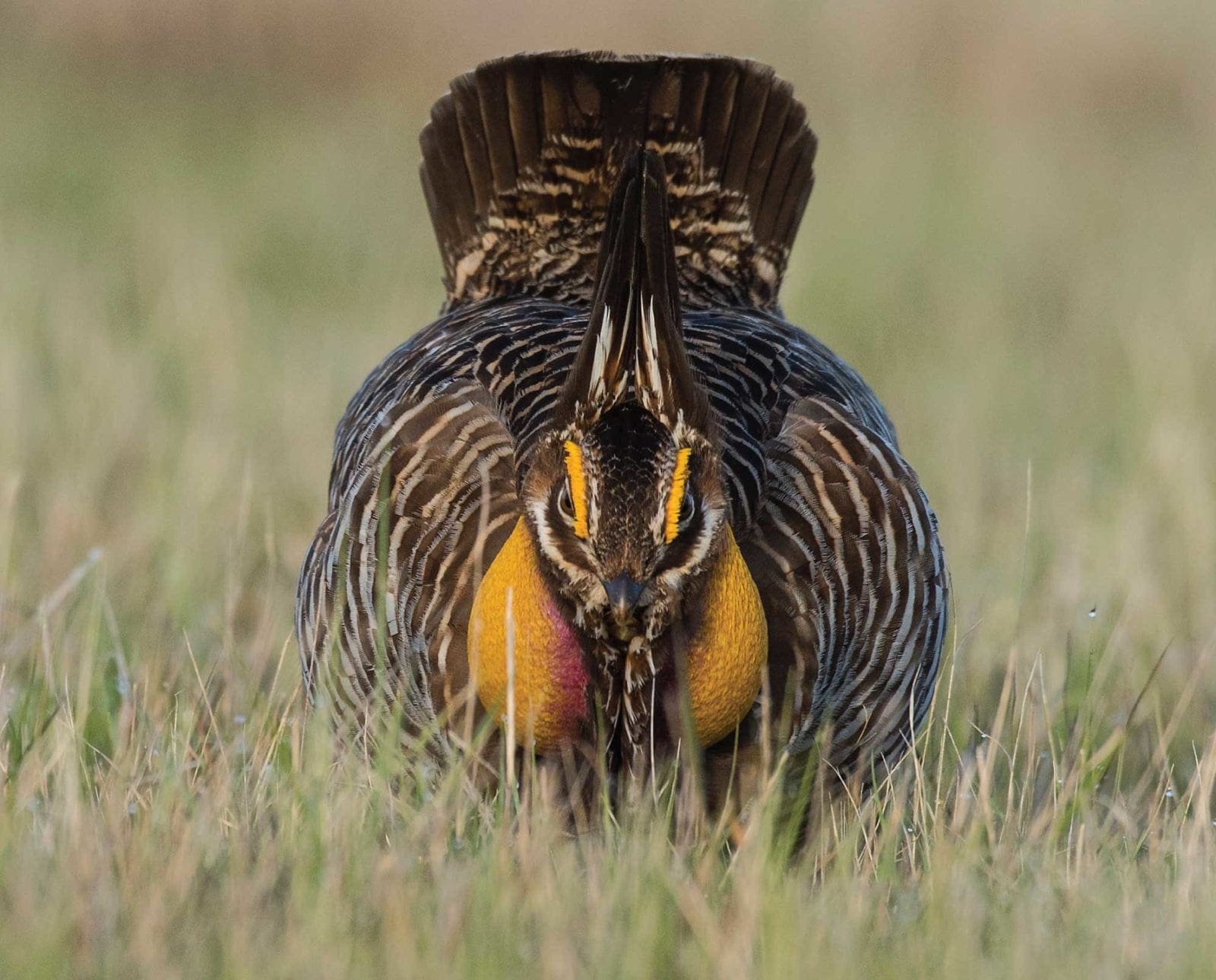Home » Conservation » The Boom Heard Across the Prairie
The Boom Heard Across the Prairie

Marissa is a licensed vet tech and biology major with…
A chance to watch the spring mating rites of the Greater Prairie-Chicken
The genus name for the greater prairie-chicken, Tympanuchus, comes from an ancient Greek word that translates as “holding a drum.” After witnessing the greater prairie-chicken’s mating ritual, I understood how they came to acquire such a name.
We hiked into our blind on an early spring morning in the sandhills of Nebraska. The wind and piercing cold made me question my decision to visit the lek, a unique flat ground where these birds display their courtship dance.
Scanning the prairie as the sun slowly began to rise, I started worrying they wouldn’t show. As if on cue, a flock of birds glided down silently, landing on the booming grounds and instantly engaging one another in their unique dance.
I pushed my face against the gap in our blind, squinting towards the birds in the low light. I felt the booming before I really registered that it was a noise, and I knew the show had officially begun. These birds could really throw some bass! Before long, there were at least ten male chickens dancing in front of our blind.
The movements were almost comical as they scurried after one another with incredible speed. Between showing off for the females and defending territories from the other males, there was no shortage of action.
Pineal feathers that normally lay flat against their neck would rise, appearing like horns on the top of their heads. Their feet continuously moved in a dance, beating against the ground. Wings spread out to their sides as they leaned down as if to bow to the lek itself. The males’ heads would drop as their brilliant orange air sacs expanded, and the booming percussion would ring out across the prairie once again.
Occasionally a burst of feathers would divert our attention toward a different group of birds as a fight would break out between two males. Flashes of talons and beaks would end as one of the males was eventually chased away and the dominant chicken would claim his territory.
A cackling came from outside the blind, a noise I can only compare to a cartoon villain’s laugh, and I searched the ground directly in front of us wondering what and where it came from. Next came the clicking of talons above as I realized with excitement that one of the birds was on top of our blind. This quirky male quickly became my favorite as I continued to follow his movements after he flew down to engage with the other prairie chickens.
The scene in front of us slowed and then stopped, the males exhausted with their efforts. I was sad when it was time to leave but looked forward to our warm car and regaining feeling in all of my extremities.
I valued what little time we were able to spend with these beautiful upland birds that proved to have better dance moves than me! I look forward to making this an annual tradition and visiting the greater prairie-chickens at their booming grounds next spring.
Find out where you can visit the greater prairie-chickens in Nebraska: http://visittheprairie.com/visit/dancing-chickens/
Sources:
American Bird Conservancy. 2018. Greater Prairie-Chicken. Accessed at https://abcbirds.org/bird/greater-prairie-chicken/
Marissa is a licensed vet tech and biology major with a strong passion for the outdoors. Born and raised in Nebraska, exploring local uplands has become the foundation of her enthusiasm for hunting. She enjoys being involved in organizations devoted to helping others learn about conservation and outdoor activities. Much of her free time is dedicated to her family, fishing and all things related to bird dogs.



